It is 22 years today since a momentary lapse of judgement changed my life and left me with a partial disability. My disability is not immediately obvious; In fact, most people do not realise that there is anything wrong with me. I have tried not to let my disability restrict my life and that goes for travelling too. Travelling with a health issue can be trying, but it is still possible.
Every year I celebrate other bloggers who have overcome mental and physical issues, inspire me and show that you can still make plans to travel with health problems.
*This site uses affiliate links and I may earn a small commission when you use my links and make a purchase without incurring an additional fee yourself.
Thank you for supporting this website. See my disclaimer page for more details.
Inspiring Bloggers who Travel with Disabilities or Health Issues
Diana from Diana Miaus
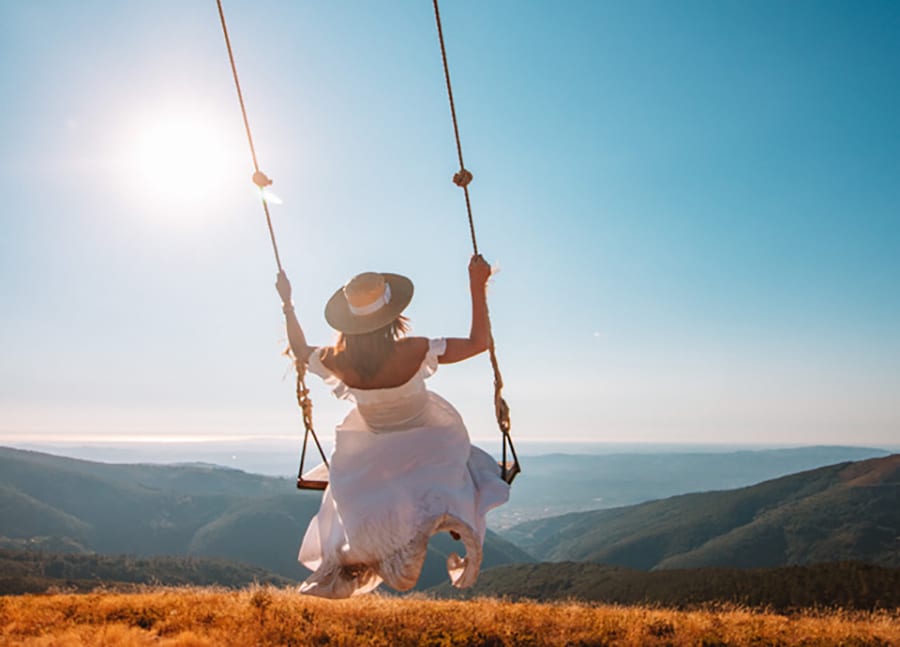
How is it to travel with a Deep Vein Thrombosis (DVT)? Although a DVT is something that usually goes unnoticed by many, it affects my travel plans more than you would imagine.
I’ve learnt how to live with a DVT since it happened to me back in the day, when I was in college. It was a bit traumatic as I spent one week at the hospital and it took me around one month to be able to walk again once I got out, but it really changed the way I decided to live my life. It gave me focus, and I’m grateful for it.
When you have had a DVT you need to be extremely careful while flying as sitting for long periods of time increases the chance to suffer it again. This includes the self-administration of heparin injections, wearing compression stockings, choosing the aisle seat to get up and walk every hour and making sure to stay hydrated. The same happens when going on long train or bus trips. Plus, my leg gets really swollen and it hurts when it’s too hot. Yet again, no one notices.
Fun fact: It’s the reason why I stopped wearing jeans in the first place – one of my legs is always swollen so I got used to wearing dresses ever since. Hey, at least that was a blessing in disguise for my Instagram photos! Anyways, travelling with a DVT is not impossible. And, guess what? Long walks by the beach, yoga and massages are the best therapy whenever I travel.
Rachita from Meander Wander
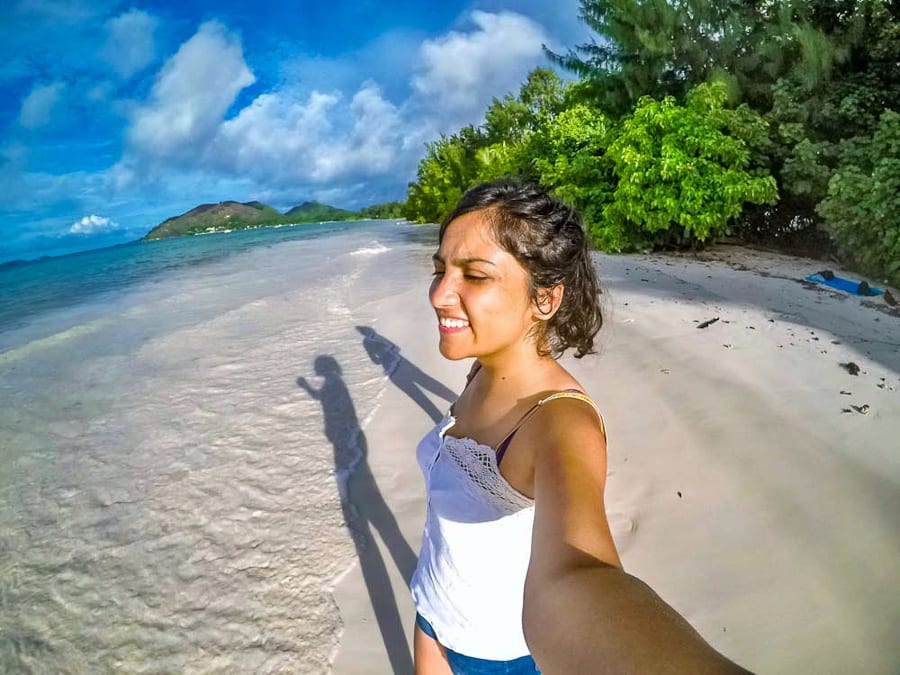
As someone who loves beaches and islands, having myopia is not the best way to travel around the world. Sadly, I have had this condition since I was in high school but I never understood the consequences of living with it until I decided to start travelling in 2015.
After a few trips, I realized that wearing spectacles because everything seems blurry on treks is not comfortable at all. Half of the time, I would be trying to ensure that my spectacles don’t fall off my face because how will I see where to go otherwise? So, I started wearing contact lenses and they have helped me a lot in normal travelling. It is still a pain to take them off in darkness when you are camping out in the wild, but after years of experience, I have got the hang of it now.
The worst part is doing underwater or any water activities for that matter. I cannot wear my contact lenses or spectacles because they would fall off due to the force of water. Earlier, surfing, swimming, etc. with any kind of eyesight is basically off the table. Thankfully, they have goggles with eye power so I don’t have to suffer through blurry eyesight underwater but wearing those goggles every time I go on a beach is not feasible as well.
After travelling for so many years, I have realized that it is not the end of the world. Yes, sometimes I have to do activities without being able to see them so I feel vulnerable and enjoy them less but nonetheless, I enjoy.
The only thing that makes me sad is the amount of money that I have spent on contact lenses and spectacles till now if I could have saved it all I would have already been to Iceland by now.
But honestly, I think this is one of the reasons why I relish the places I visit. I truly take in the sights in front of me and make sure that I don’t forget to capture those moments so that I can look at them again and again. In the end, being able to travel makes up for all the struggles of reaching that mountaintop.
Jennifer from Just Chasing Rabbits

(*This is not medical advice. I can only share my experience travelling with these disorders.)
Travelling with interstitial cystitis and irritable bowel syndrome means constantly being on the lookout for restrooms, knowing my possible triggers, picking my battles when it comes to trying new foods, taking medications vigilantly, and listening to my body. For me, it also comes with a certain amount of stubbornness and perseverance.
Interstitial cystitis is also known as painful bladder syndrome. It is an auto-immune disorder where the body attacks the lining of the bladder. Basically, the inside of my bladder is lined with open sores. The condition is chronic and there is no cure. However, with time and patience, I have learned many of the triggers that cause my IC flares (pain, burning sensation, spasms, etc.). Stress and acidic foods are my main nemesis.
This means that I have to keep my anxiety in check (anxiety and depression go hand in hand with chronic illnesses), especially while travelling, and I must pick and choose which foods to try while visiting a new place. I do have medications that help with the spasms as well as acid-reducers to help with I really want that pineapple dessert or glass of wine. The bladder spasms bring urinary urgency and frequency, so I try to avoid flares as much as possible on planes, road trips, and sightseeing days.
Irritable bowel syndrome (IBS) is a chronic condition that affects the large intestines that has no cure. People with IBS can experience diarrhoea, constipation, or a mix of the two. My condition is IBS-M (mixed). I’m still learning my triggers and figuring out patterns so that I can control my IBS more successfully. With both IC and IBS, triggers and patterns can differ from person to person, so it’s a learning process. I stay away from greasy foods and have medications that slow down the movement in my intestines. This is especially useful (when it works) during travel because restrooms can sometimes be few and far between.
Chronic conditions can cause fatigue. This is something that has continually gotten worse for me over time. I have learned to rest when I need to. This can mean taking a break to get a bite to eat, sitting on a park bench to people-watch for a while, opting for a bus tour over a walking tour, or ending our sightseeing early so I can go to bed.
I mentioned my stubbornness when it comes to travel, and while I do have to listen to my body’s needs more and more every day, I’m quite good at pushing through when I need to. This may not be possible for everyone with these conditions, and, honestly, it may not be possible for me for much longer, but I do try to finish a tour, see that one final landmark on our list, walk one more mile to an amazing restaurant, or stay out late for a once-in-a-lifetime event if I have to. I try my best to not let these conditions hinder me from experiencing amazing adventures and making memories.
My most recent changes to our travel routine include ending our day earlier and ordering delivery to dinner on some nights. This became routine for us on our most recent trip to New York City. Back at the hotel, I could get comfortable and rest, but still, try delicious local foods. Plus, I had my very own restroom just a few steps away!
Audrey Chalmers From Gumnuts Abroad
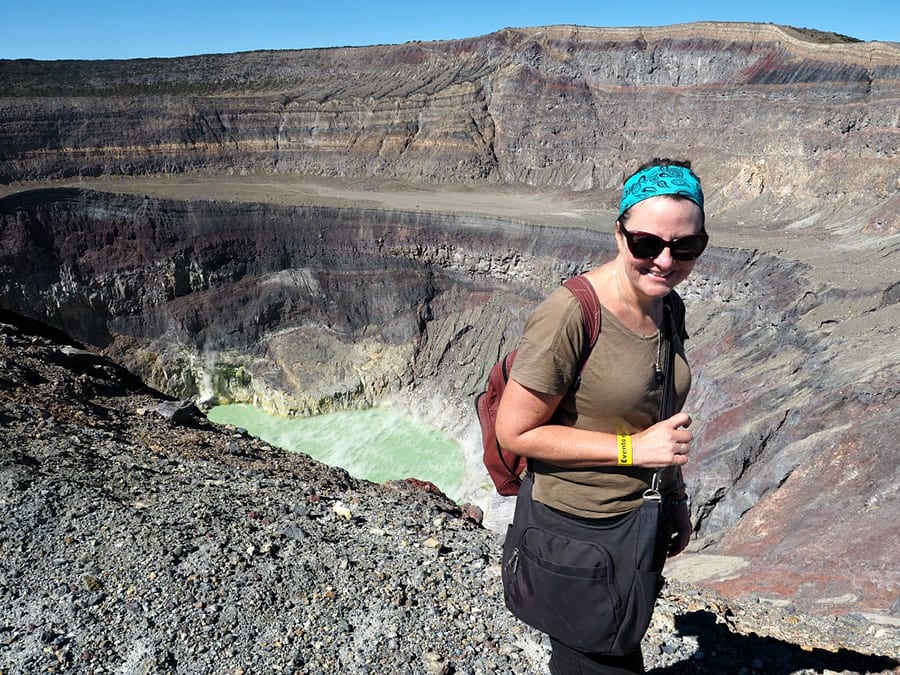
For most of my adult life, I’ve lived with chronic back pain that limits my range of movement. At times I also have acute episodes that leave me unable to stand let alone walk. But it hasn’t stopped me from backpacking around the world or from fulfilling a life-long dream of climbing a volcano. In sandals no less!
It wasn’t always easy. And I had to really get in tune with my body to learn how to keep my back in tip top shape. I discovered movement is my friend. My back tends to seize up when I sit for long stretches. So, whenever I can I travel by train as it’s much easier to get up and move around a train carriage than other modes of transport.
Standing is also painful for me and I cannot stand in one place for more than a few minutes. To avoid the lengthy queues at popular attractions, I buy ‘skip the line’ tickets online. If that isn’t possible, I get up at the crack of dawn to be first at the ticket counter. This way I get to avoid the crowds too!
Julie from The Bamboo Traveler
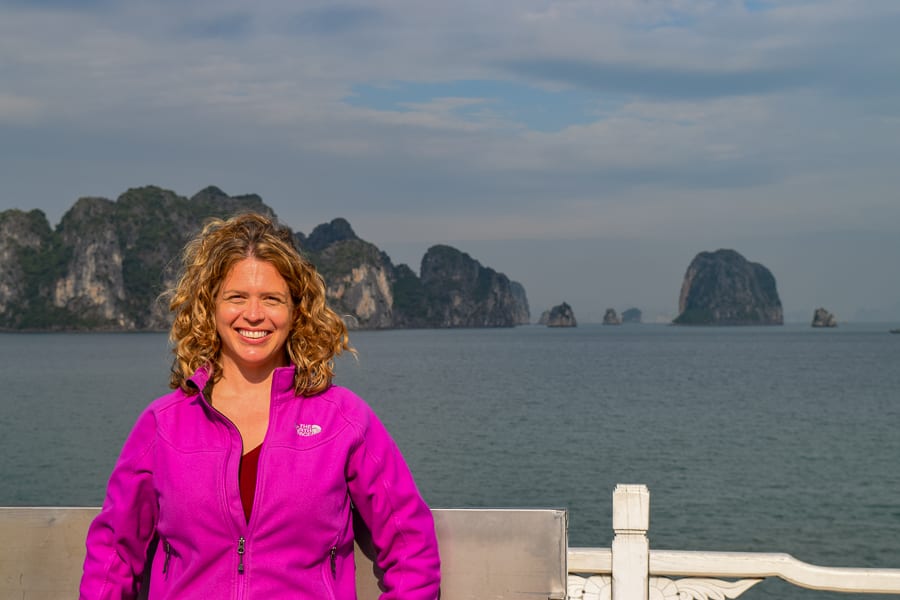
I’m sure a lot of us grew up hearing about the dreaded menopause that we would eventually be going through in our fifties. But I think few of us were ever told about perimenopause—the time before menopause when our ovaries start losing estrogen. During perimenopause, many women experience heavier and longer periods, fatigue, insomnia, mood swings, hot flashes, and frequent urination. For some women, this period of life passes by without much of a thought, but for other women, it can be pure hell.
Unfortunately, for me, it was the latter. My worst system, a heavy and painful period occurred at the worst of all possible times: starting a week before a month-long solo backpacking trip around hot and humid Southeast Asia and continuing throughout the whole trip.
These periods did not stop when I finally got back home. They became so heavy that I had to change my tampons every hour. My iron levels became extremely low. I was missing work, unable to tell my twenty-something colleagues and my male boss the real reason. I also knew that I wouldn’t be able to take my long-planned for year-long trip around the world.
My doctor presented me with several options: hormonal IUD, progesterone, and endometrial ablation. In the end, I chose a hysterectomy. It turned out to be the best decision of my life. I feel so free not having to worry about my periods ever again. And it has made travelling so much easier.
READ MORE: The Menopause and me, Hot Flushes and All
Alexandrina from Earthosea
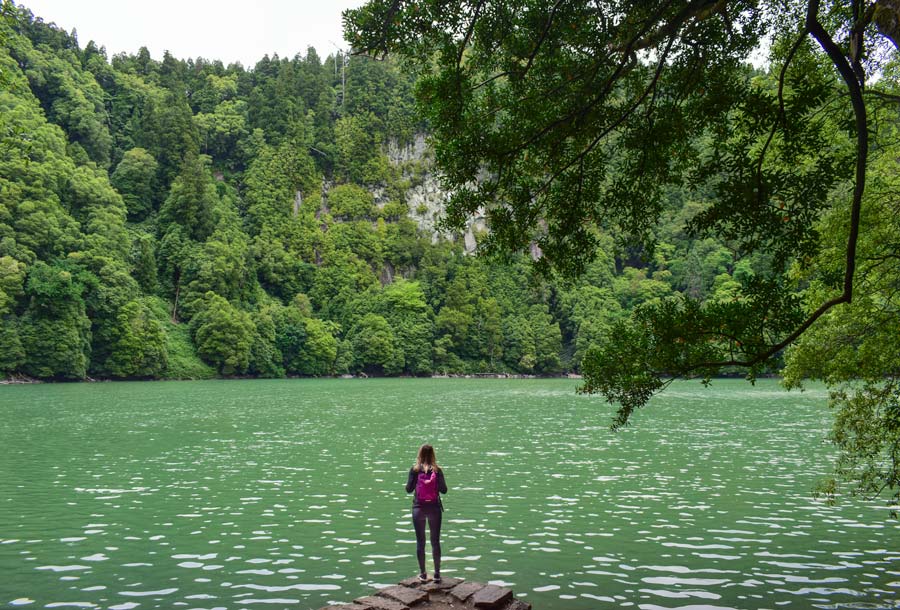
Two years ago I never thought that anxiety, depression and panic attacks exist and are a real issue. Unfortunately, I learnt it the hard way. Back in the day, I used to be a very outgoing person and always surrounded by lots of people. However, this quickly changed and I had no control over it. Ever since I have had anxiety and it turns on mostly around people.
Luckily, I got a very good therapist and help me learn how to live my life with it. Many people would think that this is the end and will struggle with it for years. Speaking from experience, the sooner you accept it, the better for you and your well-being.
Being on the road for the past two years has really helped me with my anxiety and has made me a stronger person. However, this requires lots of self-care and compassion. Whenever I feel that a panic or anxiety attack is coming I try to hug myself, talk nicely, take a deep breath and relax. Other techniques that I use is meditating. I found that meditation really does work for me and it works for a lot of people like me. It helps you settle with your thoughts and help you ease the mind.
Usually, my routine goes like that – I wake up, I meditate, I go on the road and then I repeat! I use a very nice application for meditation called Headspace.
Susan from GenXTraveller
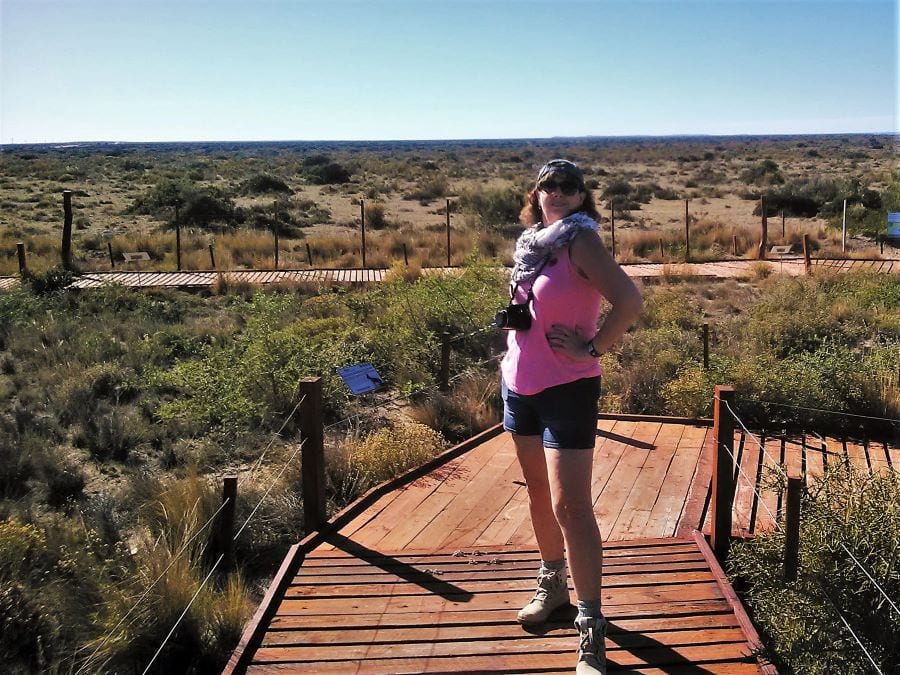
Whether newly diagnosed with Multiple Sclerosis (MS) or new to travelling with MS you may have some concerns. I know I did. Those trepidations are absolutely valid. There’s a lot to consider; medication storage, balance/mobility issues, heat sensitivity, fatigue and stamina, concerns about communicating your medical issues in a non-English speaking country, the list goes on and on.
When I first started to travel after my diagnosis, I started by cruising. This was a good way to go. I could show up at the ship, unpack once and have the ship move me from destination to destination. No schlepping luggage around the globe.
And in-port excursions are typically available for people of all fitness levels. If you aren’t feeling up to exploring a port city stay behind and there will be plenty for you to do. Cruising can be as relaxing or active as you desire.
Another worry you can set aside with cruising is the language barrier. I know until I built confidence around travel, I was very concerned about this. If I had a medical emergency would I be able to communicate my health condition to medical personnel? Typically, medical staff on cruises speak multiple languages. And when I’m in port, I wear a medical bracelet.
Cruising the Caribbean, Europe, and South America has allowed me to face the challenges of travelling with a disability and build the confidence to take on other types of travel. Today I am a confident solo adventurer. You can become one too. But if you opt to stick to cruising that’s wonderful as well. The point is not to be held back by MS.
READ MORE: Travelling with a Health Issue or Disability 2019
Josie from Josie Wanders

Travel is a bit of an obsession. When I was diagnosed with breast cancer in October 2019, some of my first thoughts we about my upcoming trips! Luckily I had only been home a few days so I still had the good vibes from my month in Canada and the US.
I was very lucky to find my cancer early and did not require chemo or radiation. I did choose to undertake a bilateral mastectomy though, so the next year would be filled with four pretty serious surgeries as the reconstruction process proceeded.
I scheduled my main surgery two days after returning from a week relaxing in Bali. If I had to do this, then I wanted time to destress first, and what could be better than a private villa, sipping cocktails and enjoying the sun. My surgeon was horrified – he was convinced I would come back with Bali belly! He soon learned my travel was not negotiable.
Two months later I was off on a cruise to New Zealand. This was my first time flying with tissue expanders, which have a small magnet in them – was I going to be stopped at every security point? The answer was yes, but each time there was just an additional scan and I was waved through.
Covid has put a halt to my international (even interstate) travel, but I have still been out and about in South Australia as much as possible. As it has come to scheduling each surgery and the follow-up appointments, I’ve made them fit around the travel I’ve had planned. Not even cancer will stop me travelling.
A big new consideration is travel insurance . I’ve never had a pre-existing condition before, and will now always have to pay more to be covered. Annoying, yes, but I will feel grateful each year I pay my premium that I am still able to get out there and explore the world.
Kay from The Awkward Traveller

Born with Graves’ Disease, I had hyperthyroidism until my thyroid cancer developed and I underwent a full thyroidectomy as well as chemo and radiation treatment as a child. As a result, I will have hypothyroidism for the rest of my life.
It isn’t particularly uncommon, but it does come with its own set of challenges, especially when traveling with hypothyroidism. First, if you are feeling “off” in any way, get a blood test before a big trip. Your energy levels and comfort can make or break a vacation. On that same note, make sure you have enough medication for the entire trip.
While some countries may allow a refill without a prescription, trying to navigate the healthcare system in a different country (and maybe in a different language too) is not on anyone’s “top 10 things to do” list. Always pack your medication in your carry-on bag with you (in case your checked luggage gets lost). If the condition causes you to have unpredictable stomach sensitivity, like I do, take some Pepto-tablets.
If you are travelling somewhere with drastically different temperatures than home, be prepared. For warmer destinations, for some reason, Powerade or some kind of sports drink with electrolytes always helps me, as well as a sun umbrella to keep heat exhaustion at bay. In cold weather, there’s not much to do aside from bundling up and staying warm.
In all, travelling with hypothyroidism requires you to know your body well, and be able to adjust your schedule just like you do at home.
Julie from The Bamboo Traveller
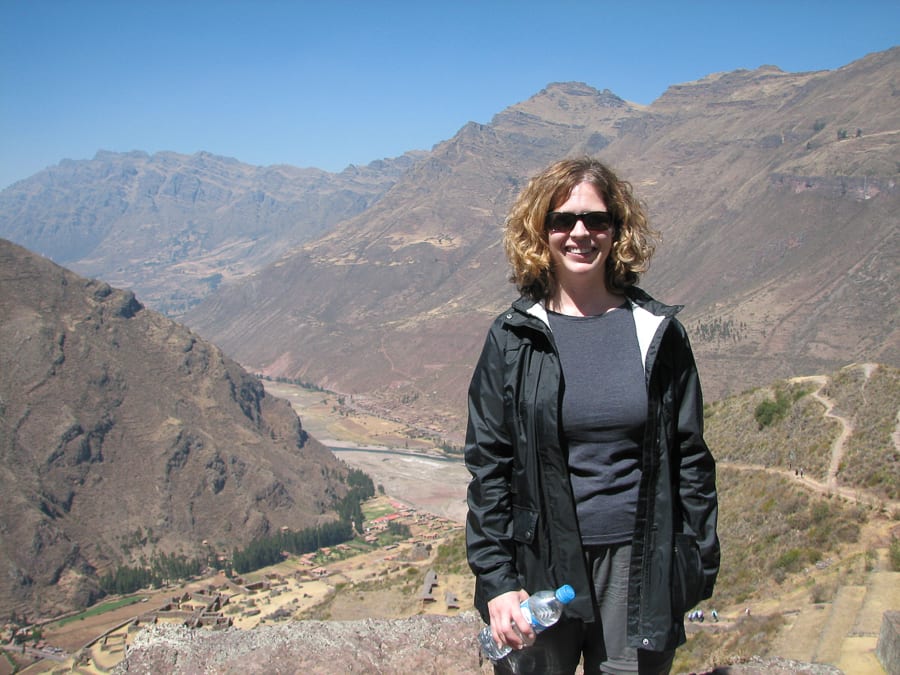
The day I slipped and fell on my left knee six years ago, I thought nothing of it. Little did I know that falling on one’s knee as a forty-year-old is not the same as a ten, sixteen, twenty, or thirty-year-old. Long story short, the left knee turned into torn cartilage and arthritis in my right knee, which led to plantar fasciitis on my left foot.
These problems came to a climax while travelling in Japan. I ended up in so much pain and with an infected blister that I had to go to the emergency room. Upon returning home, I went to a podiatrist and was told that I’d probably be unable to walk in six months unless I had foot surgery. This meant no travelling for at least a year.
In the end, I didn’t have surgery and I didn’t stop travelling. I got a second opinion and was told that I could avoid surgery if I made a few changes to my life. First, I bought stability shoes and orthodics. I lost weight. Finally, I got a better day pack with better support and made a conscious effort not to overpack. Three months after that trip to Japan, I was off on a month-long solo backpacking trip to Southeast Asia. No problems with my knee or my foot.
It’s been six years since I fell and two years since that trip to Japan. I still have knee and foot problems, but I’m also still walking and travelling.
Alison from Adventures in Wonderland

I was in pain from the waist down. I did the round of doctors but no one could help. I was told I was a long long way from needing a hip replacement. After months of frustration, we said fuck it let’s just get on with our lives, and left for four months travel around Mexico, Guatemala, and Cuba.
In retrospect this was probably the hardest travel I’ve ever done. The pain was so random and intense, but I was really, really good at ignoring it and carrying on anyway. I climbed Mayan pyramids; I’d come down on my backside because the pain was so bad, but I was determined not to miss out.
I was travelling stupid. I should have taken it easy but honestly, I don’t think I know how to; not when I’m excited to see new places! For sure the excitement kept me going. And a mental fortitude that now astonishes me. I also rode in a lot of mototaxis and bicycle taxis, but when I had to walk I did.
Sifting through my memories of that time what comes to the surface is what an amazing time we had. So many good experiences, people, and places! I wouldn’t have missed it for anything. Shortly after returning to Vancouver I found out my hip was down to bone on bone and I needed a hip replacement, but I don’t for a second regret going on that trip. It was epic!
Margarita Ibbott from DownshiftingPRO
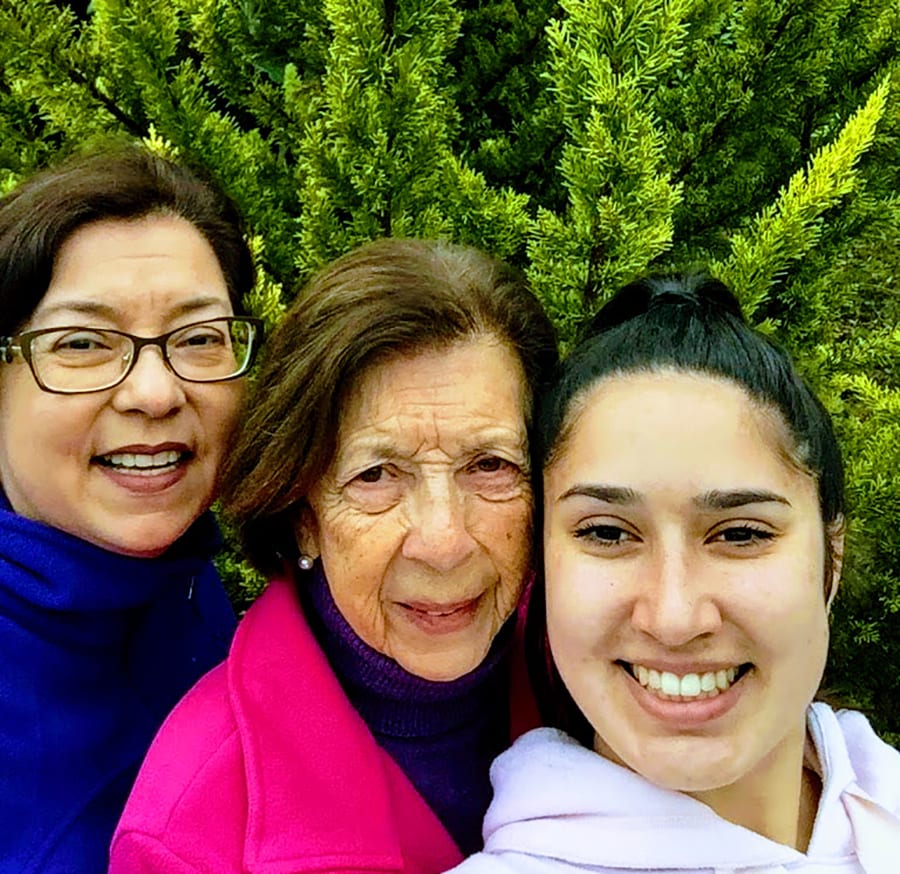
I’m not sure it’s something you plan but I know when I bought my home 16 years ago that I had carved out a space for my mother to live with us. My grandmother had fought a 7 year battle with Alzheimer’s and in my heart of hearts, I was not sure my mother would avoid that fate. Alas about 4 years ago she started showing signs of forgetfulness, misplacing items, forgetting appointments and looping. Tell us about a story or even over and over again.
She joins us just over 2 years ago but that has not stopped us from doing something she LOVES – travel. I am an avid traveller because my mother always instilled in me the importance of seeing the world and appreciating art, history and culture. We recently returned to Colombia to see her family and take a break from the mundane. But last summer we took an epic trip to southern Spain and Portugal with my sister. It was the three amigas building memories with my mother. Although the first few days were challenging for her (she kept thinking we were in her native Colombia and not Madrid, Spain), we got on track.
We let our travel mates on the bus tour know she had some memory challenges as not to be alarmed when she repeated herself or seemed confused. Everyone took care and watched over her – the generosity of travellers. We all created memories of a wonderful tour. I know that at some point in time (hopefully in the far future), she will forget our memorable trip but I know I will not. She keeps asking when we will travel next. When we can see other places and I always say…”Mom, I’m ready when we can travel again… where do you want to go?”. With that, we carry on a conversation that we’ve had before… and will again.
Nicole from Wellbeing Wherever

I’ve been an avid traveller for years; it’s a huge part of my life and is definitely a passion. I am the girl who was ready to go at a moment’s notice and was always up for whatever adventure was open to me. A 14km hike on the Great Wall of China ending with a zip-line over a lake – YES, PLEASE! Trying luge on an Olympic luge track – COUNT ME IN!
Four years ago, I was diagnosed with post-concussion syndrome after my concussion symptoms didn’t disappear following a car accident. Noise, lights, and an accelerated heart rate can cause bad headaches and sometimes I experience difficulty taking in information, recalling information, or formulating thoughts and words. I often feel drained of energy because of the effort involved in mental processing.
A few months after my concussion, I had a two week trip to Europe planned for my dad’s 60th birthday to visit 8 different countries. I was nervous about the trip, but with some simple tweaks to how I travel, we had a great time and I didn’t find my symptoms exacerbated much by the flying or walking. I’ve even travelled more since without issue!
A few of those tweaks include bringing earplugs and noise-cancelling headphones, staying hydrated, and asking for help when I need it. When I feel the urge to rest, I take time to relax and give my brain a break and I’ll even take a nap if I need it.
I’ve learned to listen to my body and be patient with myself. These simple tweaks mean I get to still travel the world, even if I am doing it a bit differently than I used to.
Heather from Oregon Outdoor Family
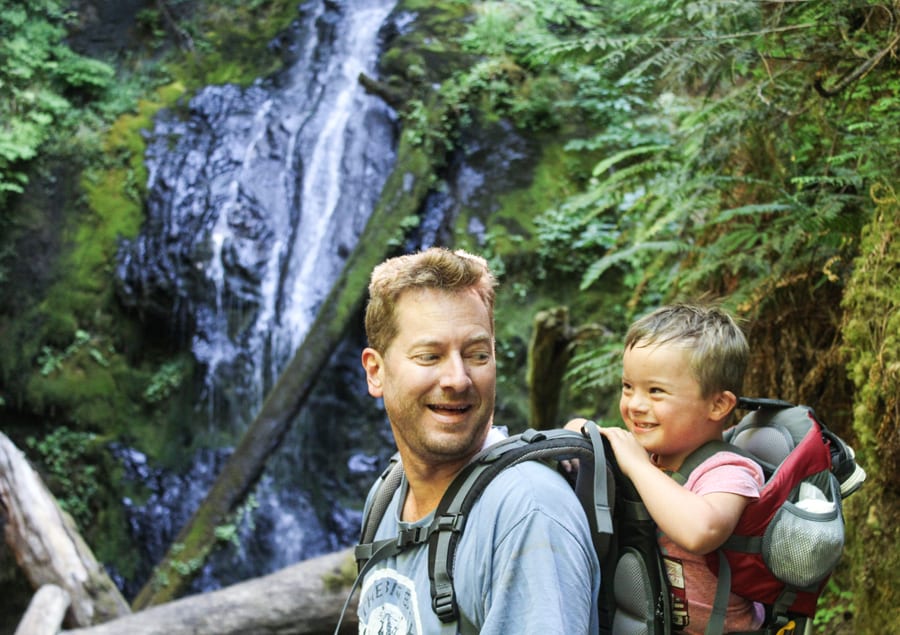
When our son, Cade, was born with Down syndrome, I was afraid it meant the end of our travelling adventures. We were determined to introduce the world to him, so we braved his first trip at 4 months old. Since then, he’s travelled thousands of miles with us and his two older siblings.
As a baby, we completed his occupational therapy exercises every day. Even on the trail, I looked for flat places to work his tiny muscles. Now that he’s seven years old, Cade gets tired much more quickly than our other kids. When we go hiking, we take a backpack carrier for him to ride in after he gets tired. This enables our family to enjoy longer hikes than Cade would ordinarily be able to complete on his own. If we’re travelling in a city, we always take a stroller for the same reason. On airplanes, we opt for one parent to preboard to set up Cade’s space, then he boards with the other parent at the last possible minute.
He recently was diagnosed with celiac disease, so that adds a whole new level of planning. We carry all of his food with us as we can never depend on finding celiac-safe foods at restaurants or convenience stores. Overall, preparation is the biggest key to travelling with a child who has a disability. Instead of limiting our world, it makes us more aware of it and we experience a deeper appreciation for every place we visit.
Samantha from Shea Intentional Detours Travel Blog

When I first started travelling in March 2017, I was already dealing with some serious neck pain. For two years by that point, I had been plagued by strange neurological symptoms, searing pain in the occipital region. I remember how painful it was to backpack those first two trips that year, where I constantly had to put down my things, generously apply Icy Hot, and worry about whether the next hostel’s pillow would be manageable.
In June 2017, quite literally days before my boyfriend and I were planning to backpack Europe for the first time, I was finally given an answer after months of waiting to see a specialist: my C2 vertebrate was fractured, and likely had been for YEARS- my only option was a C1-C2 fusion at age 21.
Considering I had been living with this ailment since 2015, I made the decision to go along with our trip as planned. Perhaps it was a bit crazy, but I was insistent on travelling in case anything went wrong during the procedure. After a fun-filled month in Europe and the Middle East, I made it home and popped into surgery within 48 hours of returning. Talk about a memorable homecoming!
Despite all the horror stories I had read online, the surgery literally saved my quality of life. The pain was reduced tenfold, most if not all of the symptoms went away, and over time I was able to build my strength back up.
Since then, I’ve undertaken two more backpacking journeys, with the most recent lasting 7 months in total. I still have to be extremely picky with pillows, but these days, pain or soreness is easily managed with Advil or occasionally, my prescribed muscle relaxer. I still bring Icy Hot along, but long gone are the days where I would need to use it every half-hour. On bumpy roads, I’ve occasionally used my soft neck collar to thwart any painful bumps, and my boyfriend has been helpful in helping me carry some of my heavier items.
For the most part, life after a broken neck sure beats life with one! After my recent long-term trip, I’ve learned that I should definitely invest in a quality travel pillow and sleeping pad, as our travels tend to take us to offbeat locales often lacking in comfort. Though I may have lost about 50% of my neck’s Left-Right range of motion, the fusion has made every subsequent trip better than those taken before it, and for that, I’m incredibly grateful.
Cassie from Cassie the Hag
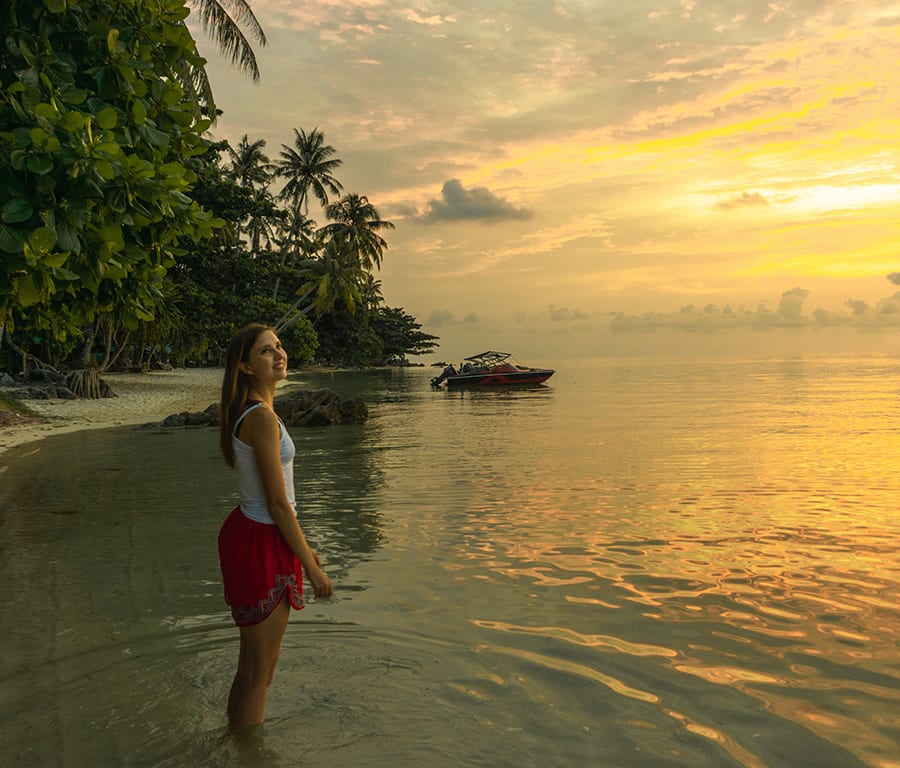
Although I’ve been fairly open about solo travelling with depression, anxiety, and PTSD, thus far I’ve kept my ADHD under wraps. This neurodevelopmental brain disorder is so misunderstood that even its name ‘Attention Deficit Hyperactive Disorder’ is a terrible description. We don’t have a deficit of attention, we just can’t regulate it, and not everyone with ADHD is hyperactive – and even those of us that are usually manifest this energy in fidgeting and stimming rather than bouncing off the walls.
Terrible organisation and abysmal working memory make backpacking alone a particular challenge. The energy it takes to travel with executive dysfunction and sensory issues have lead to increased anxiety and, at times, extreme fatigue where I could barely leave my bed for days. A big issue has been the fact I TRIED to travel like a ‘neurotypical’ person. I have particular needs that I wasn’t listening to – the impulse to ignore my condition and dive into adventure is probably part of my condition too!
ADHD was most noticeably an issue in areas where everyone uses a scooter or car. I feel like no one believes me when I explain I cannot drive for health reasons, and felt lonely and frustrated in areas where it’s required. I also felt judged for my fatigue, and in particular have worried the ‘constantly hustling’ travel blogging community would think I’m lazier or not trying as hard as they are… the truth is, I’m probably trying harder. Brushing my teeth, showering, and eating breakfast is something I have to push myself to achieve every day. Anything after that is a bonus. And seeing the world? That’s about as great a bonus as I could wish for.
I hope you have found these bloggers an inspiration that you can still travel when you have a physical or mental issue or a disability. Let me know in the comments below how you cope with travelling.
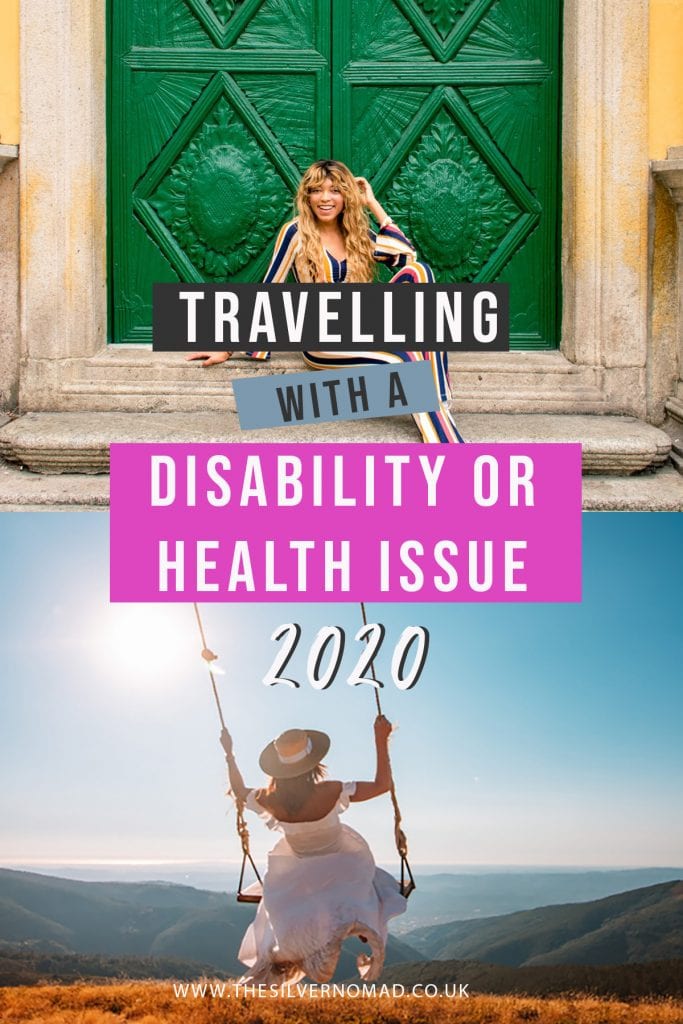
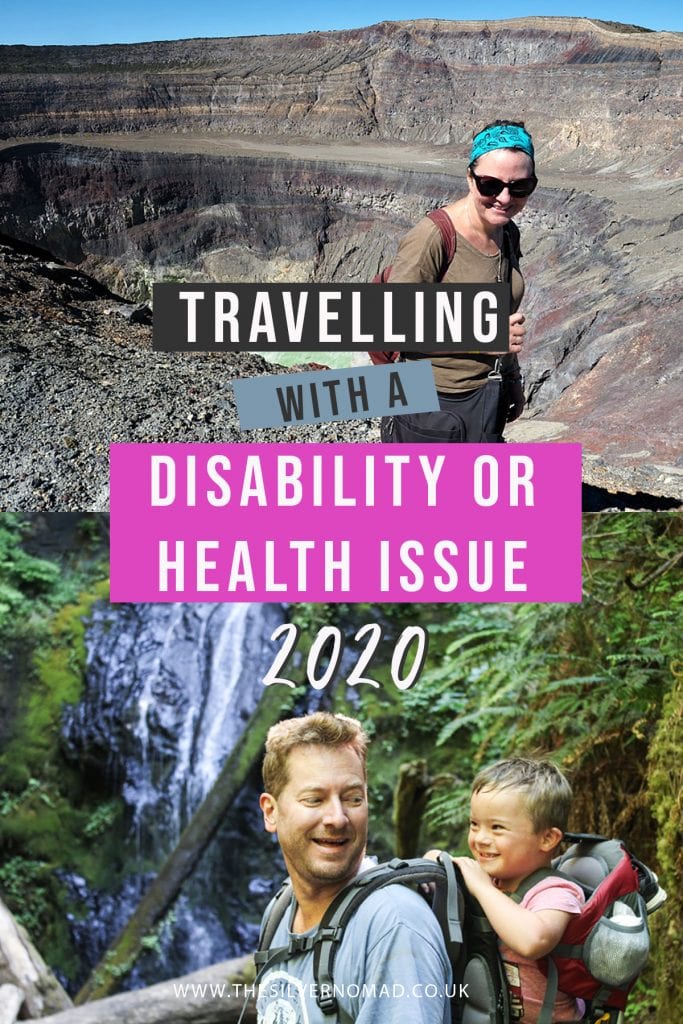
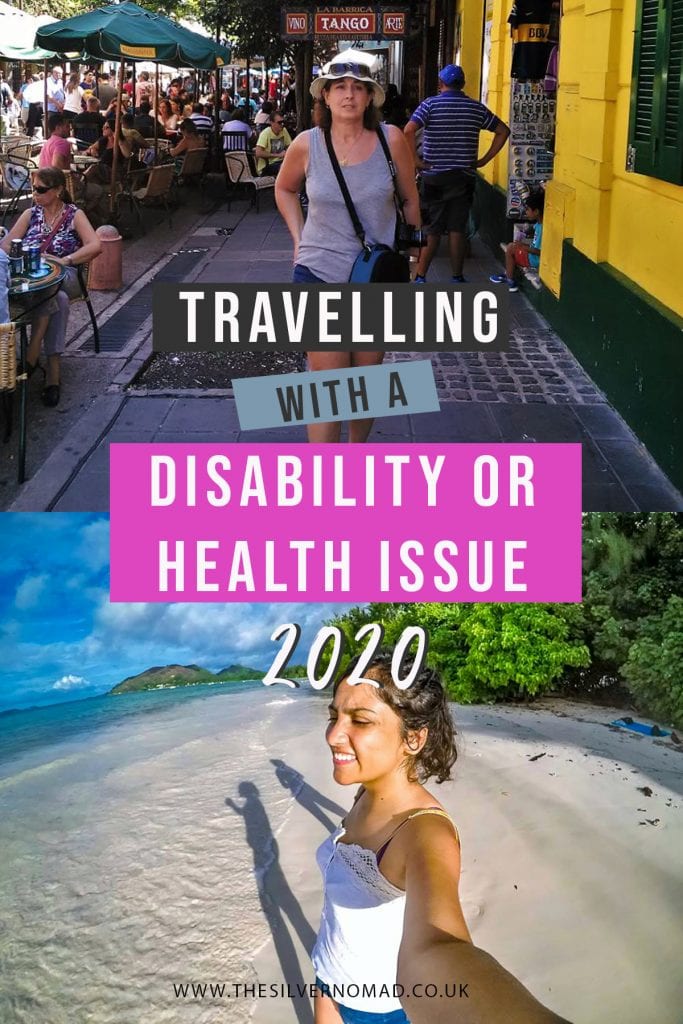

Very inspiring post. These people are traveling with different-2 problems, someone using lense, had surgery and so on. Seriously, you guys are very brave. If they can travel with world with these serious problems then why not us. You inspired me, Larch. Kudos to you
What an amazing group of travelers and such inspirational stories. I love hearing that the health issues and disabilities that people face does not stop them from doing what they want to do, and am in awe of every single person here. Lovely post celebrating what it really means to be a traveler
Wow, what an inspiring post of wonderful stories. Travel is taxing as it is so to hear how these women are adjusting to the demands is amazing.
This was a really interesting read – thank you for sharing everyone’s stories!
Great post as to learn from travelers about how they coped up traveling inspite of having health problem. I loved how all of them are well traveled and follow traveling as a passion. All really need a big applause.
An inspirational post. Thank you to each of those who shared their stories. With acceptance, desire and will, we can overcome many of life’s challenges.
What a cool post — its really inspiring to see how possible it is to keep traveling (safely!) even with chronic health issues. It definitely reinforced that there isn’t one travel style that fits all, but with planning and patience anyone can see the world!
What an amazing group of women! Travel can be tough at the best of times when you are fit & healthy but to take on some of these epic trips with ongoing health conditions is inspirational. Thank you for sharing their stories, it really does make you see how lucky you are & what really is possible when you put your mind to things.
All of us have some health issue or the other at our ages (not so young). It is indeed encouraging to hear about how those who have severe issues are dealing with it with courage. Ultimately, it is our will power and spirit of doing something that gets us going in life. Thanks for sharing this collab post! 🙂
A great post Larch – thanks for shining a light on the fact that it’s very possible to travel well despite a health issue or disability. I’m sharing this post with my Type 1 diabetic niece to inspire her to step out and travel!
Travelling is hard enough many days for people that are healthy. Adding in a health issue or disability might just tip the scales for me. So many inspiring stores from people who are managing to keep travelling with such a range of issues. Luckily we are healthy – if getting older. But these travellers show there are ways to accommodate the issues and keep going.
What an inspiring blog post! These travelers are fierce and overcome what could be a serious obstacle when it comes to travel flawlessly!
Thank you for including my story in this post! I am honored to be featured here with these strong people and hope we can all be inspiring for others who may have health issues to continue to push forward and travel.
Thank you so much for being part of my post. You are an inspiration!
Great post Larch. Thanks for including me. I think I had it easy compared to some of the others who have shared their stories here. We are all tougher than we think when push comes to shove.
It was a pleasure to have your contribution Alison, very inspiring!